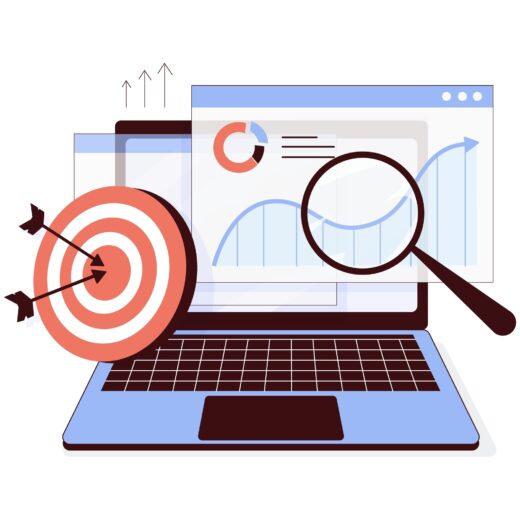
Accessibility
Websites must be accessible to all people, including those with disabilities. Failure to comply with accessibility regulations carries the risk of significant penalties and legal action. With the European Accessibility Act (EAA) deadline of June 28, 2025 approaching, businesses need to prepare to ensure compliance.
Discover how we can help make your website accessible to everyone
Websites must be accessible to all people, including those with disabilities. Failure to comply with accessibility regulations carries the risk of significant penalties and legal action.
This is why we’ve chosen to partner with iubenda, leaders in online compliance. As Certified Partners of iubenda, we’ve developed a proposal to offer all our clients a simple solution for accessibility requirements.
Why website accessibility matters
Making your website more accessible is essential for:
- Legal compliance: Avoid potential sanctions and litigation risks
- User experience: Improve usability for all visitors
- SEO performance: Boost search rankings and organic traffic
- Ethical responsibility: Make the access to your digital content more equal
Digital accessibility requirements – June 28, 2025 deadline
With the European Accessibility Act (EAA) deadline of June 28, 2025 approaching, businesses need to prepare to ensure compliance. Failing to prepare for this deadline exposes businesses to:
- Legal risks: Potential discrimination lawsuits and administrative penalties
- Market exclusion: Possible inability to provide services in the EU
- Reputational damage: Negative brand perception due to lack of inclusivity
Who needs to comply with the new accessibility requirements?
You need to comply with the European Accessibility Act (EAA) if you meet BOTH of these conditions:
- Sell products or services to consumers in the EU
AND
Meet at least ONE of the following criteria:
- Have 10 or more employees
- Have an annual turnover exceeding €2 million OR a balance sheet total exceeding €2 million
Are there any exemptions to the accessibility requirements?
Yes, exemptions include:
- Microenterprises (fewer than 10 employees AND annual turnover not exceeding €2 million OR annual balance sheet total not exceeding €2 million)
- Cases where compliance would require a “fundamental alteration” to a product or service
- Situations where compliance would impose a “disproportionate burden” on the economic operators concerned
- Specific types of pre-existing content on websites and mobile applications
What is digital accessibility?
Digital accessibility involves making websites usable by people with various types of disabilities, including:
- Visual impairments (color blindness, low vision, blindness)
- Hearing impairments
- Motor disabilities
- Cognitive and learning disabilities
- Neurological disabilities
Approximately 1 in 6 people worldwide (over 1.3 billion individuals) live with some form of disability, representing a significant market segment that is often overlooked.
What if my website isn’t accessible?
It’s highly likely that your website has accessibility barriers without you being aware of it. The most common issues include:
- Insufficient contrast between text and background
- Lack of alternative text for images
- Impossible keyboard navigation
- Incorrectly labeled forms
- Multimedia content without captions or transcripts
iubenda’s Accessibility Solution
Get closer to meeting EAA requirements before the June 28 deadline with just a few clicks. The solution adds a floating accessibility icon to your website that opens a control panel where users can customize their browsing experience:
- Persistent accessibility panel: Always available for users to adjust settings anytime
- Text adjustments: Size, spacing, and style options for better readability
- Visual adaptations: Contrast, colors, and dark mode for visual impairments
- Motion controls: Reduce or pause animations for motion-sensitive users
- Navigation aids: Enhanced keyboard navigation for motor impairments
- Screen reader support: Optimized for assistive technology compatibility
The widget automatically modifies your website in real time based on user selections through a dynamic overlay, without changing your core code – creating personalized experiences with minimal implementation effort.
While this solution helps improve website accessibility and supports your digital compliance journey, complete EAA compliance may require additional measures across your organization’s products, services, and digital properties.
Benefits of our solution
Accessibility-focused benefits:
- Act early to meet accessibility standards: Simplify the implementation of accessibility requirements before deadlines approach
- Mitigate potential risks: Help reduce exposure to discrimination claims and regulatory concerns
- Ongoing monitoring: Continuous scanning helps identify new issues as your website evolves
- Enhanced reputation and trust: Demonstrate your commitment to inclusion and equal access
Performance-focused benefits:
- Boosted organic traffic: 73.4% of websites see increased organic traffic with accessibility improvements
- Improved search rankings: Enhanced site structure and content clarity that search engines reward
- Optimized for mobile and voice search: Accessible sites perform better with modern search technologies
- Reduced bounce rates: Create a more usable experience that keeps visitors engaged longer
- Expanded market reach: Access the $1.9 trillion market of people with disabilities
Our expertise with iubenda
As Certified Partners of iubenda, we have the expertise necessary to configure and implement your Accessibility Solution based on your specific needs. We’ll guide you through the entire process, ensuring your website is well-positioned to meet the June 28, 2025 deadline while improving user experience for all visitors.
Ready to make your website more accessible?
Contact us for a consultation →
Don’t wait until the deadline approaches – start improving your website’s accessibility now to enhance user experience, boost SEO, and reduce legal risks.







